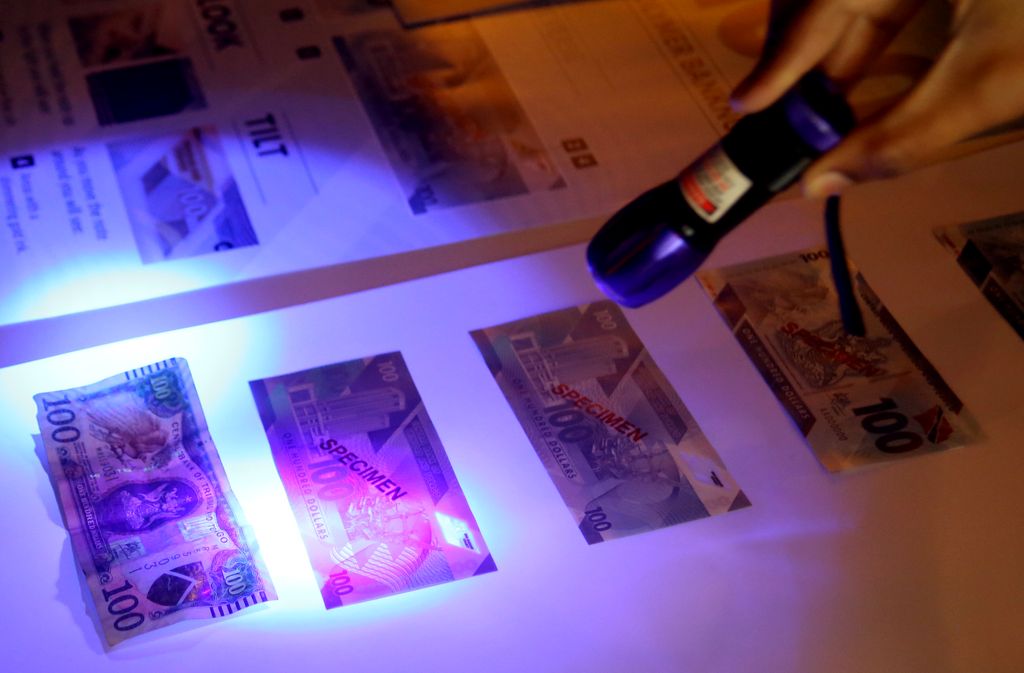(Trinidad Guardian) Less than one week after commercial banks started exchanging the existing $100 cotton bills for the new $100 polymer notes, criminals have begun to produce counterfeit $100 paper bills.
A video began circulating on social media yesterday, advising the public to be on alert and cautious when receiving the new money, as fake copies of the new $100 bill have already been discovered and in circulation.
The public has until December 31 to swap their old $100 cotton bills for the new $100 polymer notes.
The person in the video was able to identify the bogus bill by its non-polymer feel and the fact that when he held it to the light he did not see the number 100 appear in blue print in the clear window.
But upon examination, both bills looked similar in design and had the same shade of blue.
The video was widely shared on Facebook.
In response to the video, National Security Minister Stuart Young in a Whatsapp message to Guardian Media confirmed that counterfeit bills of the new $100 bills were picked up.
“The surfacing of a video on social media is not surprising but the counterfeit attempt is easily identifiable. The counterfeit would not be on polymer which is easily identifiable by touch and it also doesn’t include the various security features of our new $100 note, for example, the transparent window.”
He said criminals attempt to counterfeit “every major currency in the world,” including the United States bills.
“The new $100 polymer note has much-improved security features and is a great improvement on our old cotton notes,” Young insisted.
President of the Arima Business Association Reval Chattergoon said while he has received no reports from members of his association receiving bogus $100 bills, he said he saw the video which left him “shocked, confused and worried.”
Chattergoon said less than one week after banks began issuing the new $100 polymer bills, criminals were able to duplicate the bill using paper.
“I am not sure if the criminals have been trying to stir more chaos than what we are already experiencing.”
He said this showed that criminals have been mastering technology.
“They would try to penetrate every barrier.”
Chattergoon said he wants to believe that people who may not know the difference between the fake and new bills may have already been fooled “in accepting counterfeit.”
President of the Downtown Owners and Merchant Association Gregory Aboud said no one from his association had complained of receiving the counterfeit $100 bills.
He said it was somewhat alarming that our country was so prone to running from one crisis to another and making “every molehill into a mountain with every single issue that arises.”
Aboud said worldwide, the polymer note is impossible to replicate.
“We hardly think that anyone has been born yet who knows how to counterfeit a true polymer note,” Aboud said.
Security features
The front of the new polymer bill has a much larger image of the
“Coat of Arms” with 100 emblazoned on the top left and centre-right of the bill.
The back has shimmering gold ink on the top right corner, as well as an image of the Central Bank Twin Towers on the left side.
Polymer feels smoother than paper.
If you run your fingers over the bottom corner of the note you will feel the X braille which helps the visually impaired.






